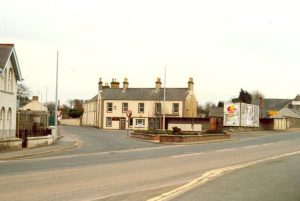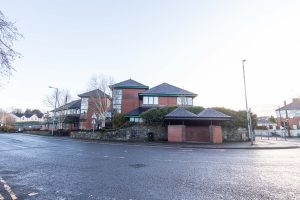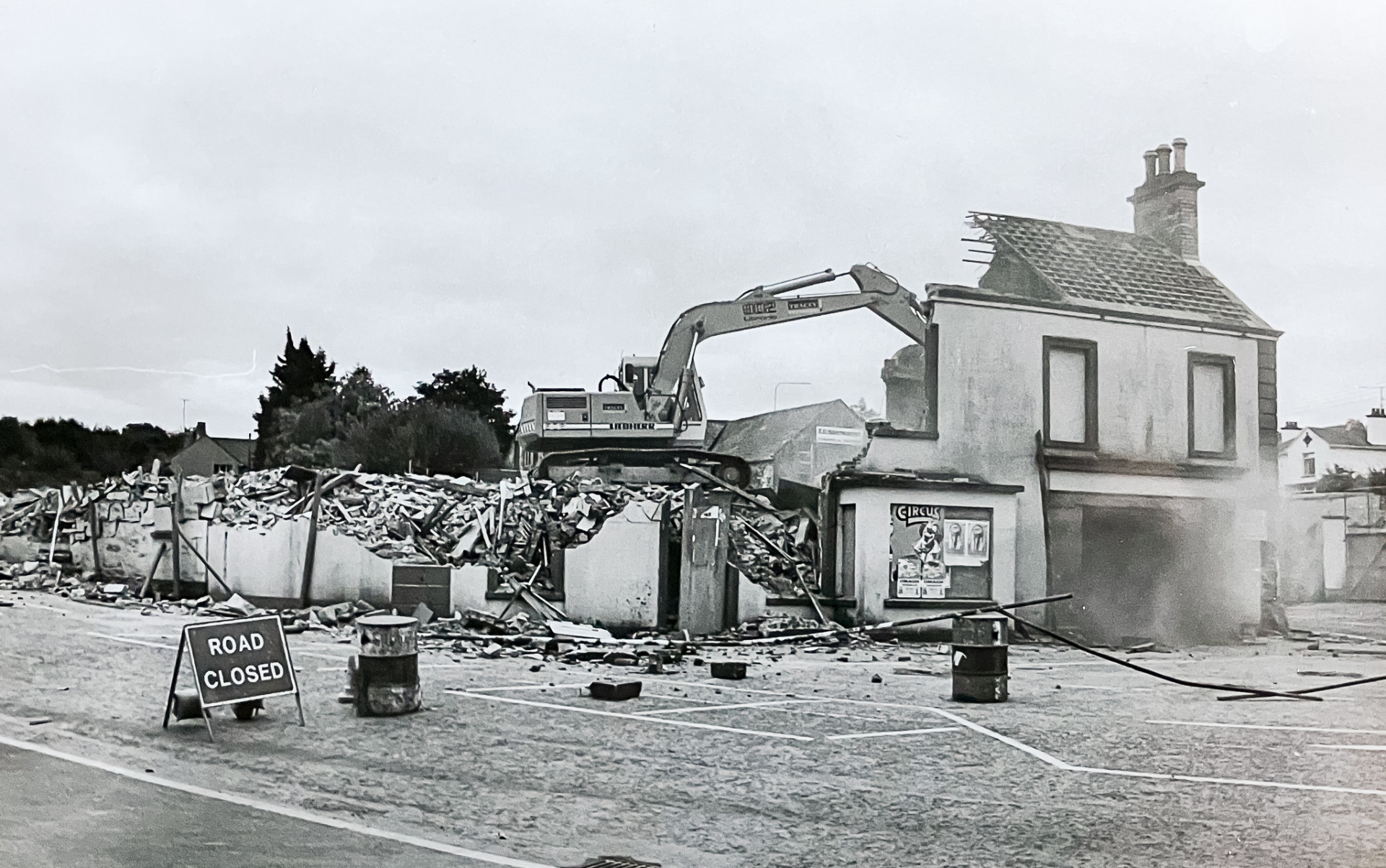In an era where electricity brings so many things silently to life with a mere flick of a switch, it’s hard to imagine the days when Omagh was illuminated by the warm glow of gas lamps.
For more than 140 years, the Omagh Gas Company was the heartbeat of the town; an early symbol of progress and innovation.
The genesis of this gas era can be traced back to the early 1800s, when an Irish parliamentary act paved the way for the introduction of gas-burning streetlamps in major cities like Belfast and Dublin. Yet, it wasn’t until 1850 that Omagh decided to harness this new technology.
The ‘Omagh Gas Company’ was born at the intersection of Irishtown Road and Dublin Road, where, today, stands the Education Authority and Technology Education Centre.
It was also placed just 100 yards from the former railway depot at Market Yard, which is now Dunnes Stores car park.
Once operational, the town witnessed a transformation as streetlights illuminated Omagh’s lanes and alleys.
The gas company’s first secretary elected was a man named Daniel McCallum, who lived with his wife and son in one of 30 houses dotted along Spillars Place just across the road from the gasworks.
By 1891, 40 years after the gas works was established, Mr McCallum was elected as the president of the Northern Ireland Gas Engineers Association, and, in 1892, the Association held its annual convention at Omagh in his honour.
The company’s early years proved to be very successful, as a financial report published in 1897 showed that the Omagh gas works was supplying up to 6,000 residents, and shared a capital of £6,500.
This innovative success was reflected by the expansion of office space for the gas works site, alongside a residential space for the managers.

However, Daniel McCallum would pass away in May 1898 after 40 years of service to the company.
His successor, T Whimster, who was at that time secretary to the Northern Ireland Gas Engineers Association, would oversee a landmark change at the privately owned town gas works.
In 1902, the Omagh Gas Company transitioned from private hands to public ownership under the Omagh Urban Council.
This change heralded a period of expansion, with gas lighting up new housing developments, such as the extension of Gallows Hill in the 1920s.
The operation of bringing the coal to the gas house was streamlined and rather convenient.
As the quality Welsh coal would arrive in open wagons via train, it would be hand-loaded and moved 100 yards by horse and cart with rubber wheels to support the mass weight of the coal.
When it arrived through the gates of the gas works, it would be weighed, and the load recorded at the weighbridge office located next to the arched entry to the yard.
The yard consisted of an entrance porch, main public office, managers’ office and a weighbridge office.
The manager’s residential accommodation was on the floor above the office, and extended further over the entry and above some of the storage buildings on the Irishtown Road. Omagh gas works had two large and easily-recognisable gas holders on-site, with the larger one situated in the orchard at the rear of the yard, and was a familiar sight in the town for many years.
The smaller one was located in front of the office at the junction of the Dublin and Irishtown roads.
Yet, as the 20th century progressed, challenges mounted for the gas works. The mid 1940s would see the gradual decline of gas operations, as more streetlights were beginning to move to electric fittings, and, with the removal of the Omagh railway in 1965, it became very expensive to transport coal by road.
Additionally, the discovery of natural gas in the North Sea in 1965 spelled the beginning of the end for the Omagh Gas Company.
The move to supplying natural gas to local homes helped keep the company afloat through the 1970s, but by 1986, the once-thriving gas works had ceased operations, and six years later, the site was demolished, paving the way for new educational infrastructures.

–
LIGHTING THE TOWN
By Kenneth Collins
In 1946/47 the main streets in Omagh had electric lighting but in the suburban areas such as Gallows Hill the original gas lights were still in use and Gerry Keavney was the lamplighter responsible for their maintenance.
Gerry had a short ladder strapped to his bicycle and each evening around dusk he checked all the lights placing his ladder against the original iron column and if necessary replacing the mantle or the odd pane of glass broken in the lantern head.
The lights had a small constantly lit pilot light attached to a mechanical time clock which turned the gas off and on at the lighting up times and these clocks had to be wound up around once a week.
THE METERS
The entry point in houses for a gas installation was at ground level where a stop valve and a coin or quarterly meter was fitted and surface fixed lead piping went from here to supply gas to cookers and mantle illuminated light brackets fixed to walls in the rooms at a higher level.
Sometimes the lead pipes or fittings developed leaks and the gas fitter Charlie Donnelly spent a good deal of his time tracing and repairing these by sniffing his way along the pipe runs and applying a soapy liquid mixture to pin point the suspected leak to be repaired.
The coin meters used for the pre payment of gas in houses were mainly penny types although some shilling coin ones existed and all meter dials were read by gasworks collection staff every quarter of each year.
Upon reading the usage the coin box was unlocked and the cash taken out, counted before putting into five shilling paper bags and then placed in a box bike for conveyance to one of several banks in town where it was lodged into the Gasworks Omagh Urban Council account.
The coinless meters installed in some of the larger houses and commercial premises were read every quarter again by gasworks staff and then bills posted out to users which would be paid with cash or cheque at the office at Spillars Place.








